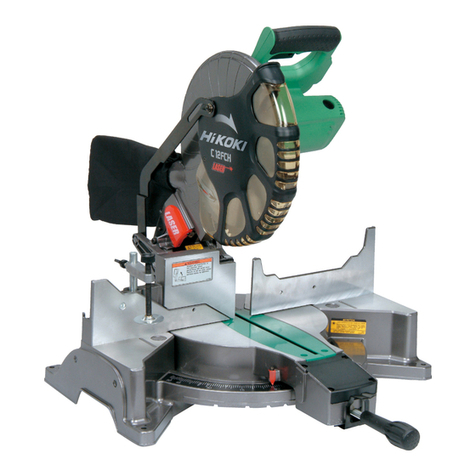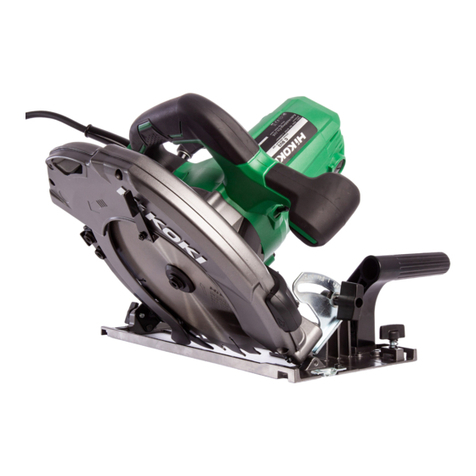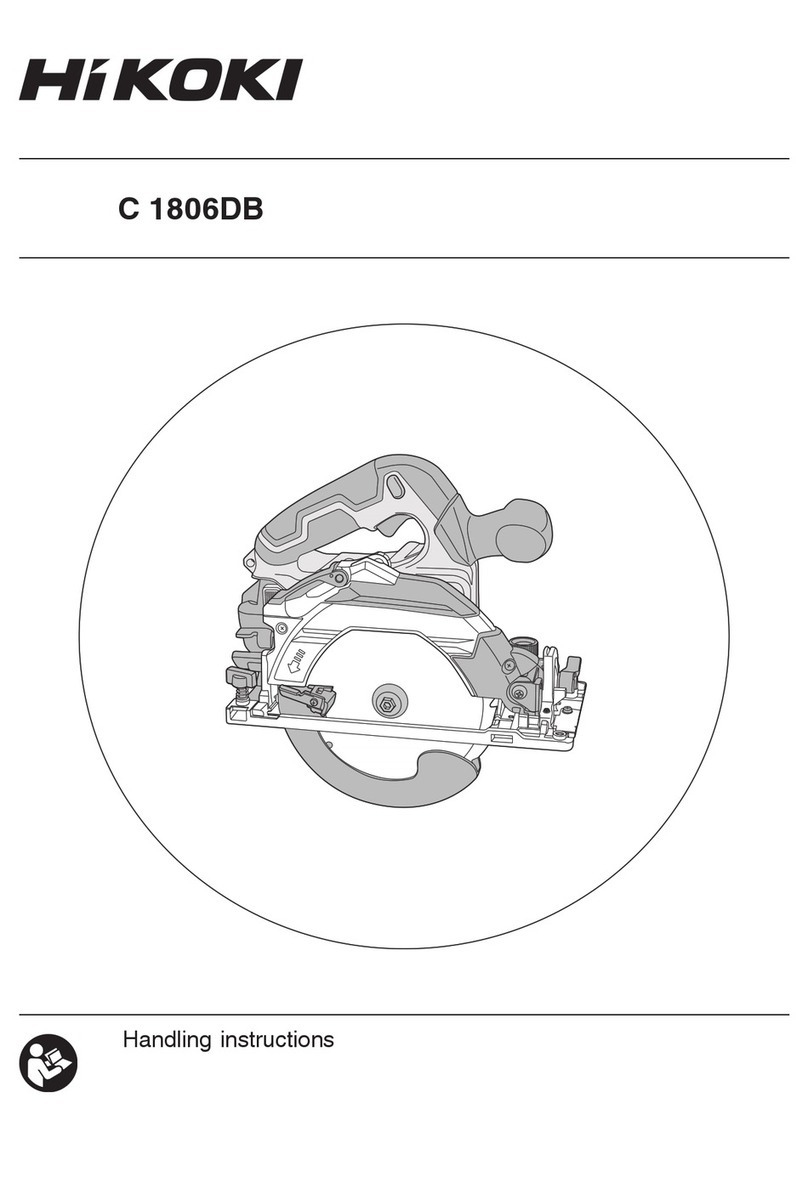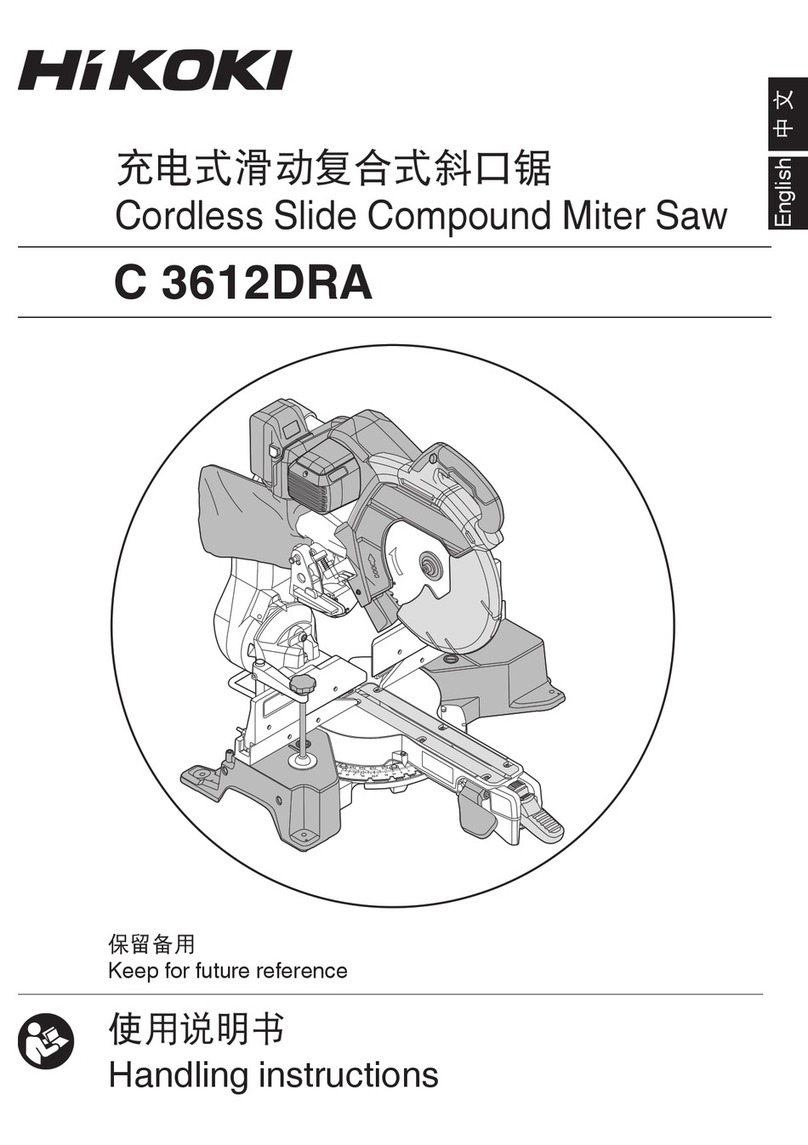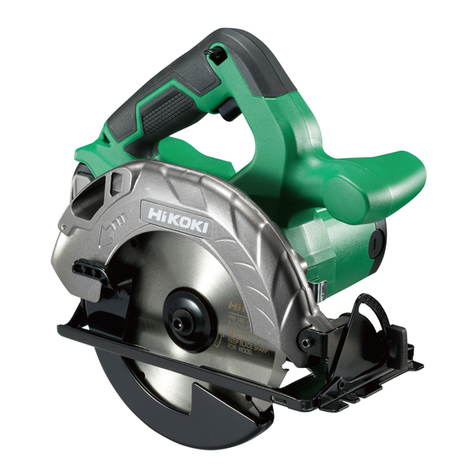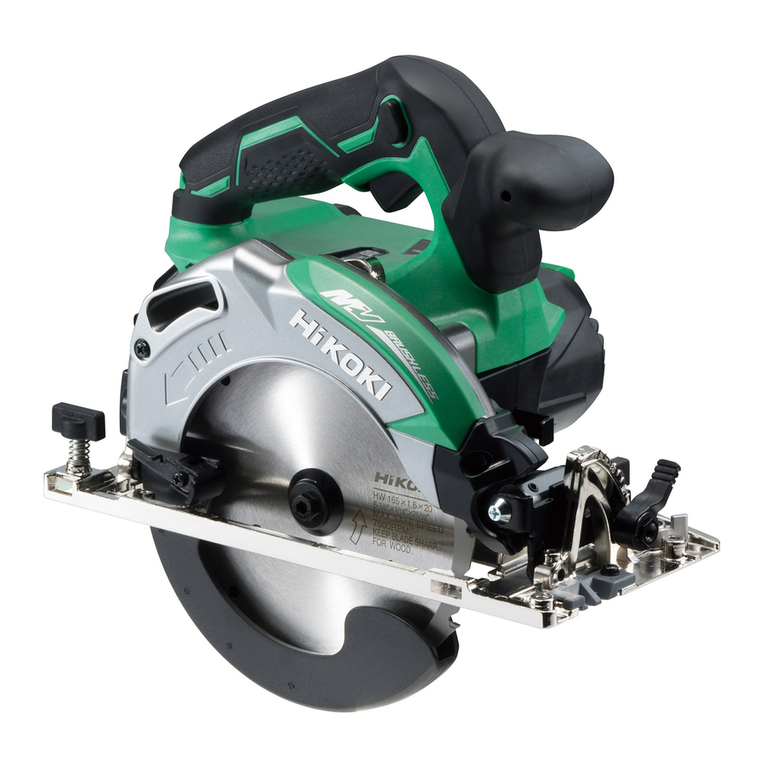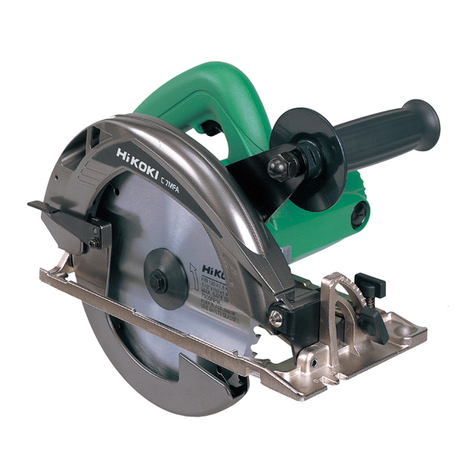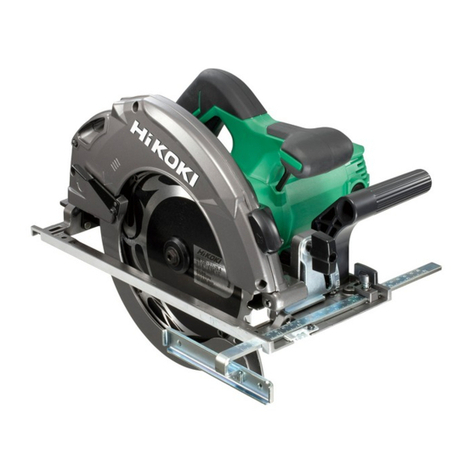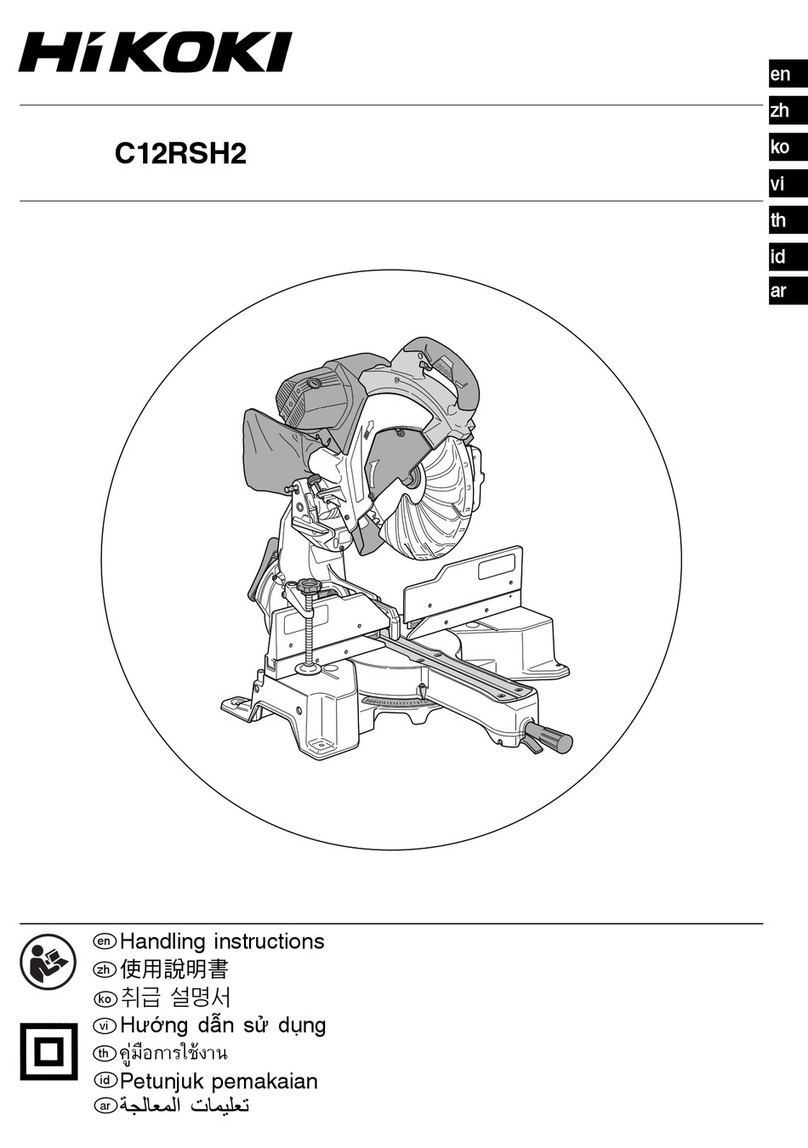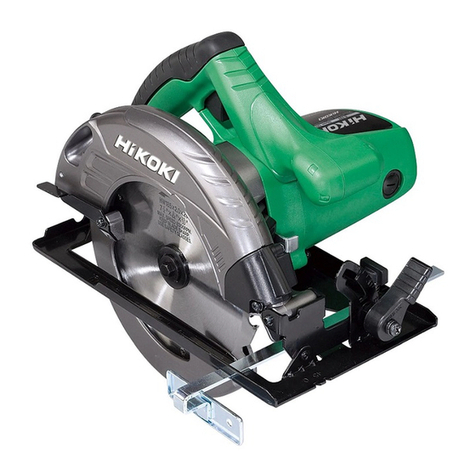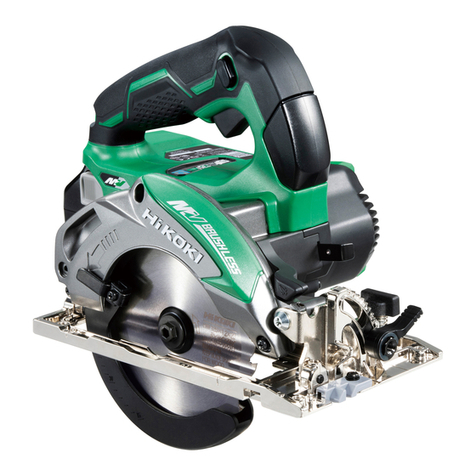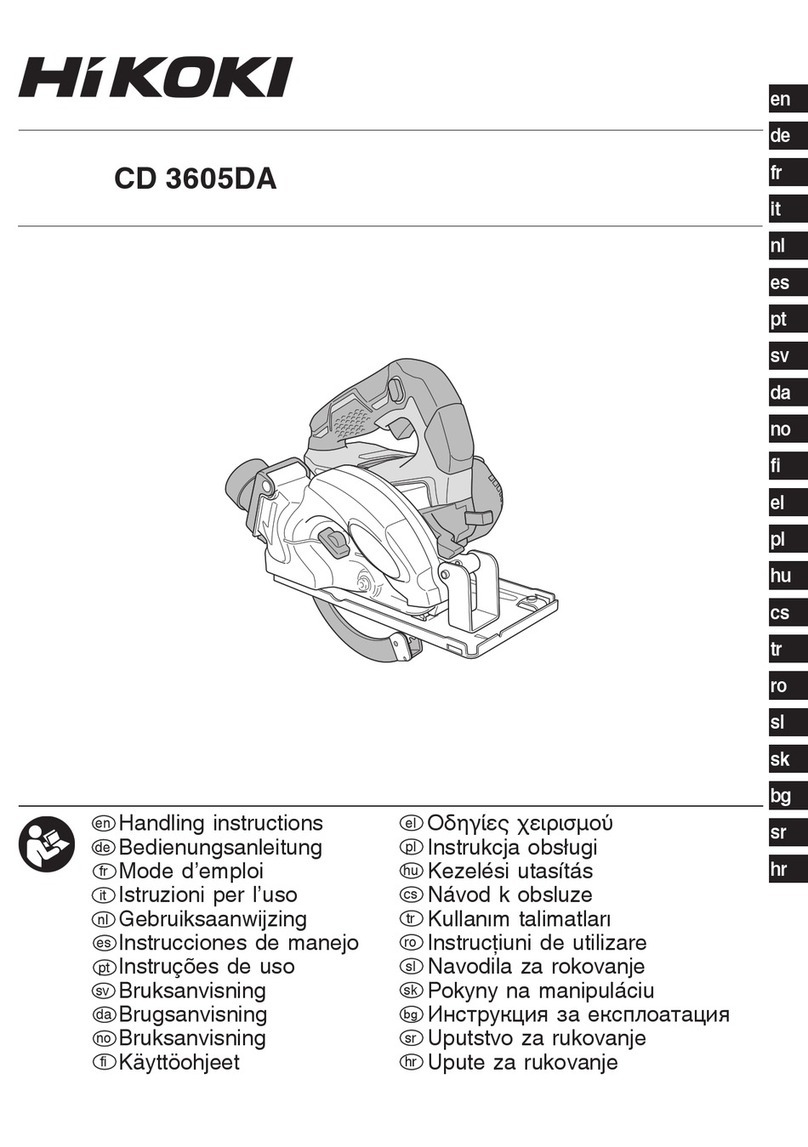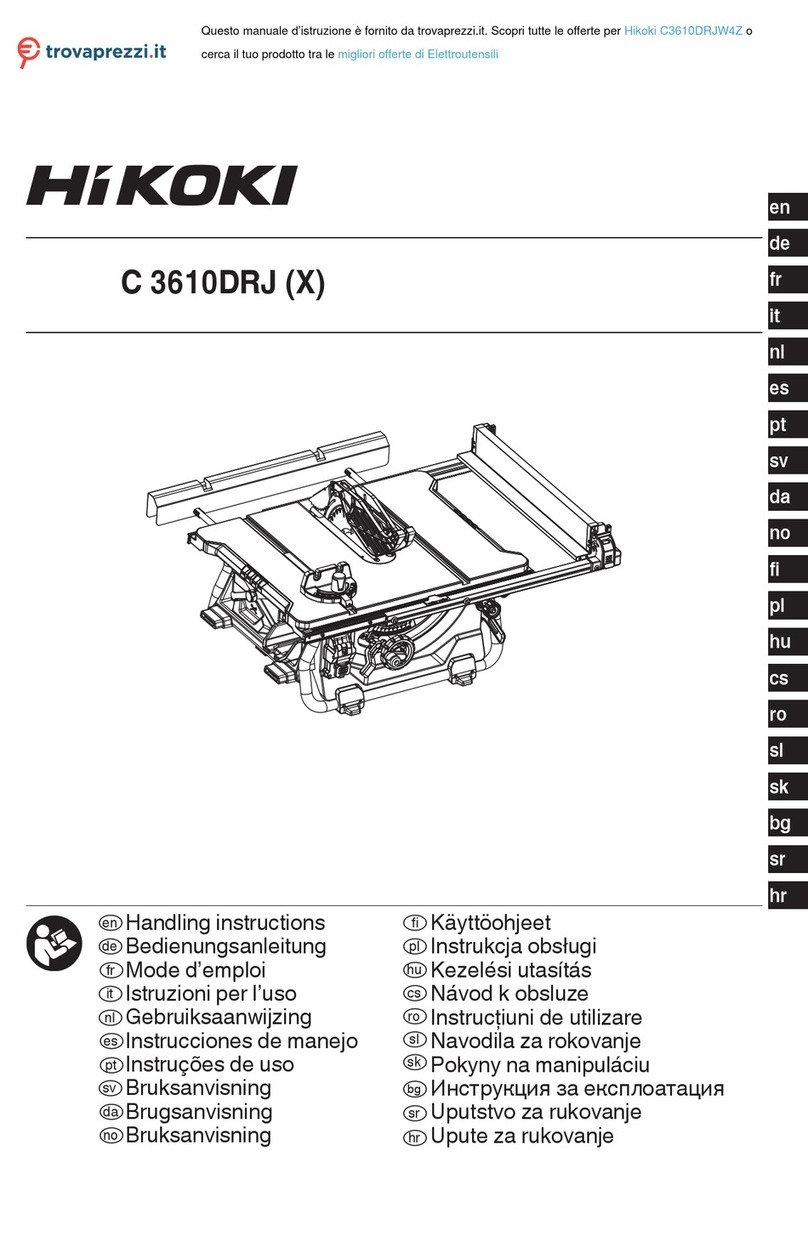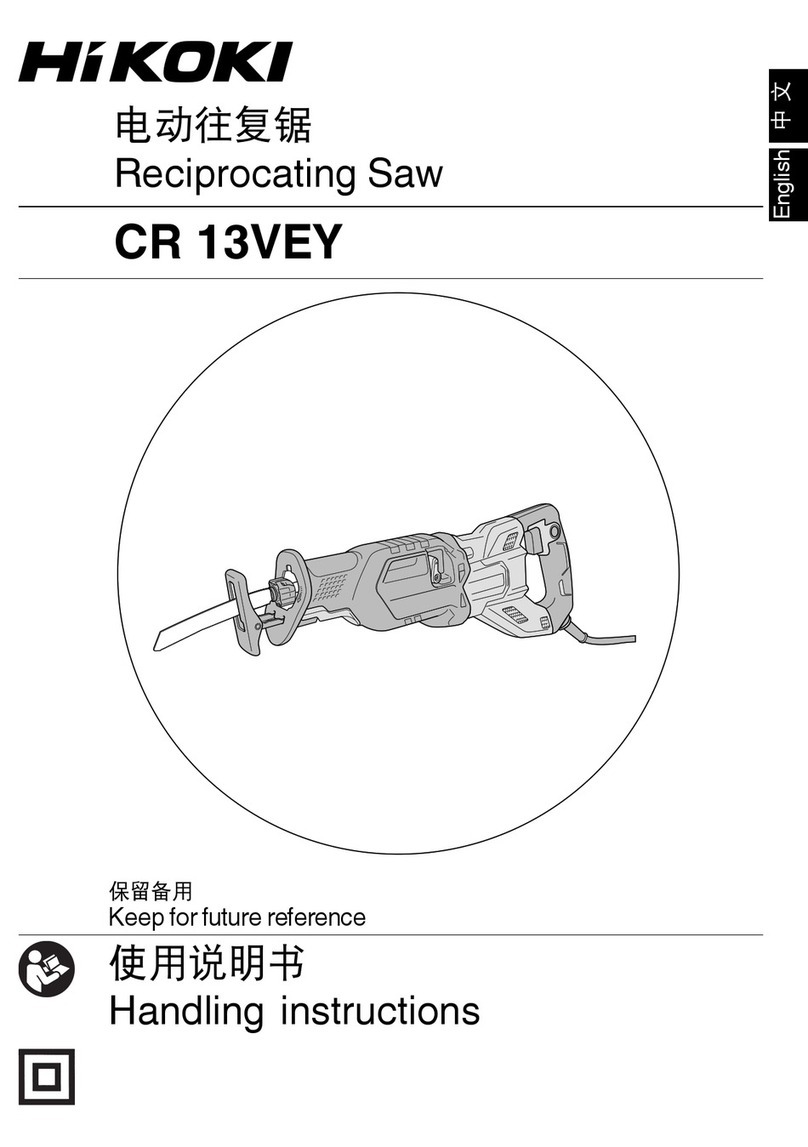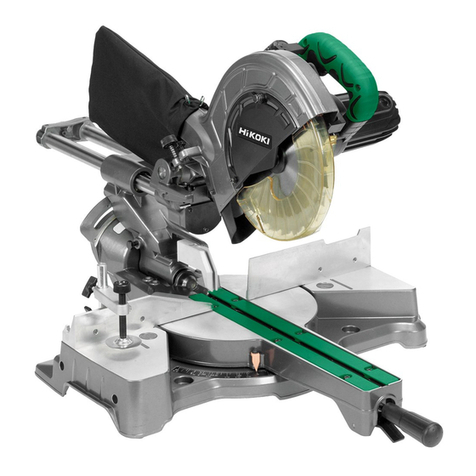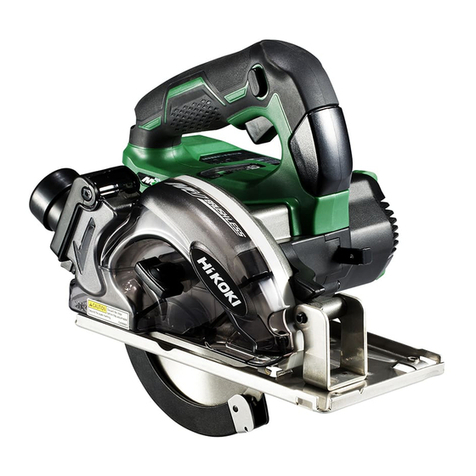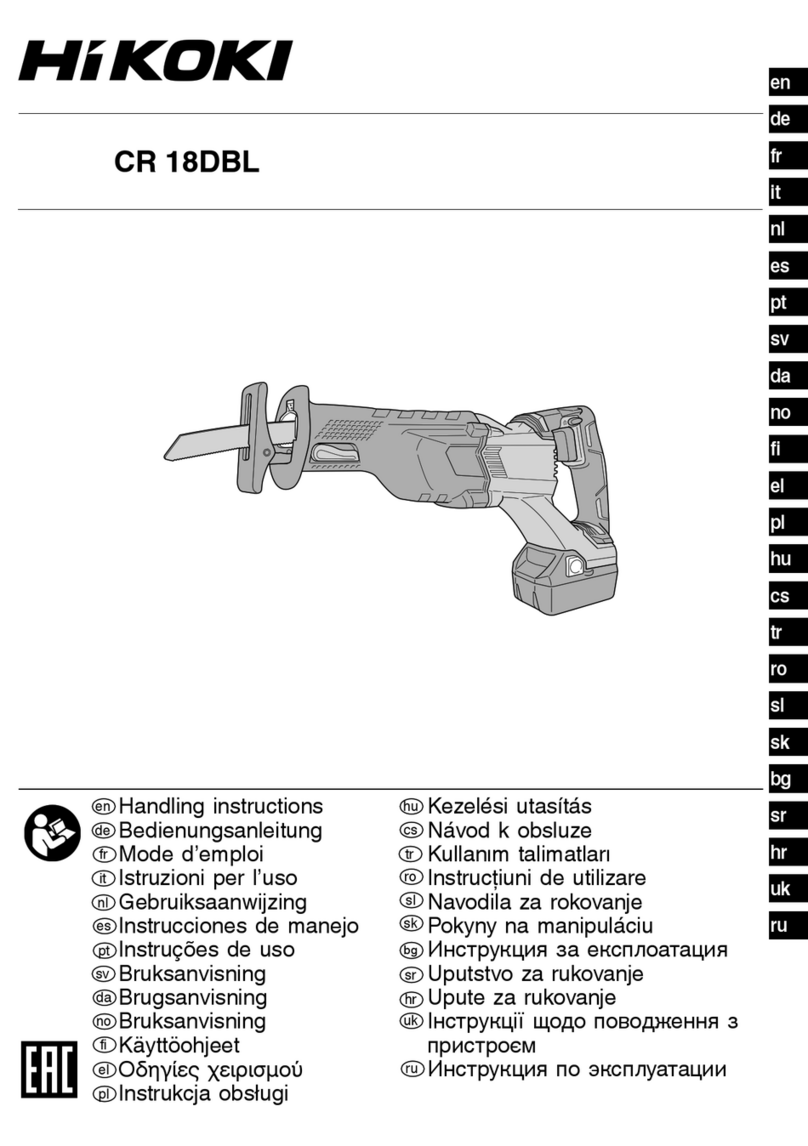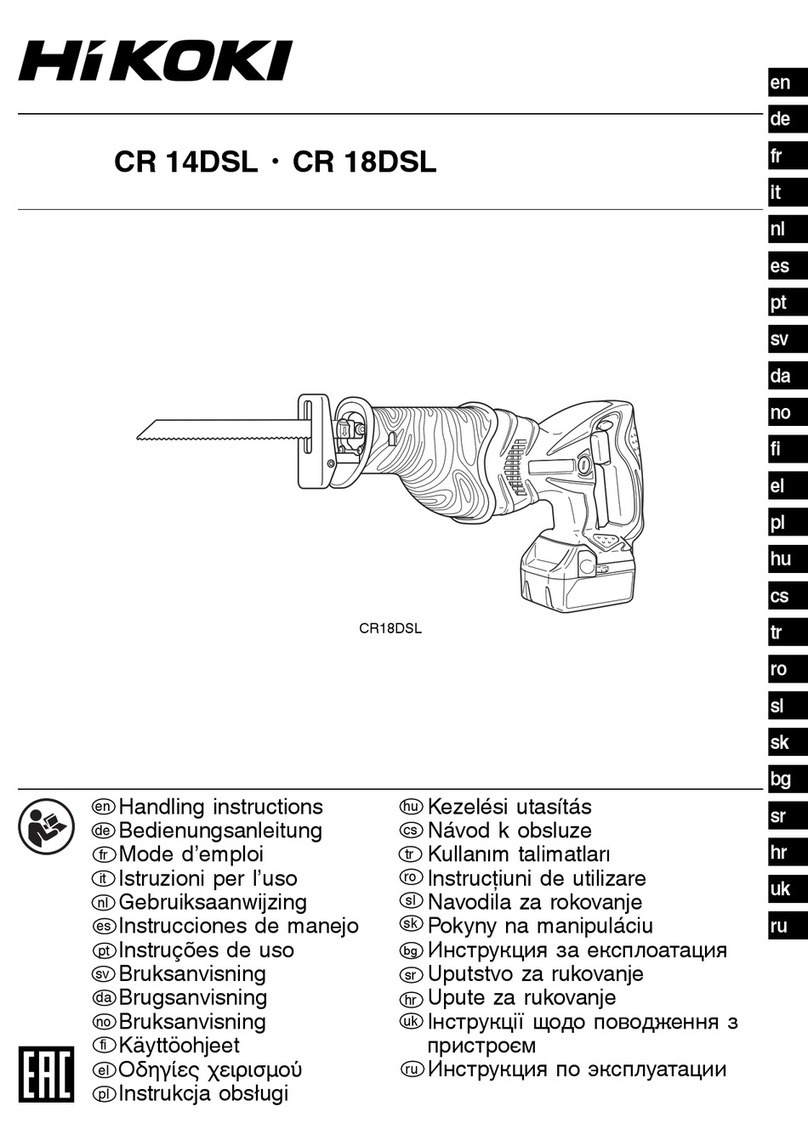
3
b) Use power tools only with specifically
designated battery packs.
Use of any other battery packs may create a risk of
injury and fire.
c) When battery pack is not in use, keep it away
from other metal objects, like paper clips, coins,
keys, nails, screws or other small metal objects,
that can make a connection from one terminal to
another.
Shorting the battery terminals together may cause
burns or a fire.
d) Under abusive conditions, liquid may be ejected
from the battery; avoid contact. If contact
accidentally occurs, flush with water. If liquid
contacts eyes, additionally seek medical help.
Liquid ejected from the battery may cause irritation or
burns.
6) Service
a) Have your power tool serviced by a qualified
repair person using only identical replacement
parts.
This will ensure that the safety of the power tool is
maintained.
PRECAUTION
Keep children and infirm persons away.
When not in use, tools should be stored out of reach of
children and infirm persons.
CORDLESS RECIPROCATING SAW
SAFETY WARNINGS
1. Hold power tool by insulated gripping surfaces,
when performing an operation where the cutting
accessory may contact hidden wiring.
Cutting accessory contacting a "live" wire may make
exposed metal parts of the power tool "live" and could
give the operator an electric shock.
ADDITIONAL SAFETY WARNINGS
1. Preparing and checking the work environment. Make
sure that the work site meets all the conditions laid forth
in the precautions.
2. Do not allow foreign matter to enter the hole for
connecting the rechargeable battery.
3. Never disassemble the rechargeable battery and
charger.
4. Never short-circuit the rechargeable battery.
Shortcircuiting the battery will cause a great electric
current and overheat. It results in burn or damage to the
battery.
5. Do not dispose of the battery in fire. If the battery is burnt,
it may explode.
6. Bring the battery to the shop from which it was purchased
as soon as the post-charging battery life becomes too
short for practical use. Do not dispose of the exhausted
battery.
7. Do not insert object into the air ventilation slots of the
charger. Inserting metal objects or inflammables into the
charger air ventilation slots will result in electrical shock
hazard or damaged charger.
8. When using this unit continuously, the unit may overheat,
leading to damage in the motor and switch. Therefore,
whenever the housing becomes hot, give the saw a
break for a while.
9. If the machine is used continuously at low speed, an
extra load is applied to the motor which can result in
motor seizure. Always operate the power tool so that
the blade is not caught by the material during operation.
Always adjust the blade speed to enable smooth cutting.
10. Always hold the body handle and front cover of the
power tool firmly. Otherwise the counterforce produced
may result in inaccurate and even dangerous operation.
11. Mounting and dismounting the blade
○Pull the back of the saw blade two or three times by hand
and check that the blade is securely mounted. When
pulling the blade, you will know it is properly mounted if it
clicks and the lever moves slightly. (Fig. 7)
○When pulling the saw blade, be absolutely sure to pull it
from the back. Pulling other parts of the blade will result
in an injury.
○Never touch the saw blade immediately after use. The
metal is hot and can easily burn your skin.
○If the broken saw blade is hidden inside the small slit,
hook the broken blade using a tip of another saw blade
and take it out. (Fig. 8)
○After use, blow away sawdust, earth, sand, moisture,
etc., with air or brush them away with a brush, etc., to
ensure that the blade mount can function smoothly.
○Do not use any saw blade with a worn-out blade hole.
Otherwise, the saw blade can come off, resulting in
personal injury.
12. Make sure that the battery is installed firmly. If it is at all
loose it could come offand cause an accident.
13. Do not fix and secure the switch lock. Besides, keep
your finger offthe switch trigger when the tool is being
carried around. Otherwise, the main body switch can
be inadvertently turned ON, resulting in unexpected
accidents.
14. Be careful not to let sawdust, earth, moisture, etc., enter
the inside of the machine through the plunger section
during operation. If sawdust and the like accumulate in
the plunger section, always clean it before use.
15. Do not remove the front cover which will cause in an
injury.
Be sure to hold the body from the top of the front cover.
16. During use, press the base firmly against the workpiece.
17. Select a saw blade of the most appropriate length.
Ideally, the length protruding from the base of the saw
blade after subtracting the stroke quantity should be
larger than the material.
If you cut a large pipe, large block of wood, etc., that
exceeds the cutting capacity of a blade; there is a risk
that the blade may contact with the inner wall of the pipe,
wood, etc., resulting in damage. (Fig. 10)
18. Never apply any unreasonable force to the saw blade
when cutting. Doing so can easily break the blade.
19. The motor can be locked sometimes, depending
on the combination of the material to be cut and the
blade. Whenever the motor gets locked, switch it off
immediately.
20. Use clamps or another practical way to secure and
support the workpiece to a stable platform. (Fig. 11)
Holding the work by hand or against your body leaves it
unstable and may lead to loss of control.
21. When cutting metallic materials, use an appropriate
cutting fluid (spindle oil, soapy water, etc.) to prolong the
bladeʼs service life.
22. Delay the feed speed when cutting the material into
small circular arcs. An unreasonably fast feed may break
the blade.
23. Plunge cutting
○Avoid plunge cutting for metallic materials. This can
easily damage the blade.
○Never pull the switch trigger while the tip of the saw
blade tip is pressed against the material. If you do so, the
blade can easily be damaged when it collides with the
material.
○Make absolutely sure that you cut slowly while holding
the body firmly. If you apply any unreasonable force to
the saw blade during the cutting operation, the blade can
easily be damaged.
0000BookCR18DBL.indb30000BookCR18DBL.indb3 2017/12/0510:33:502017/12/0510:33:50
